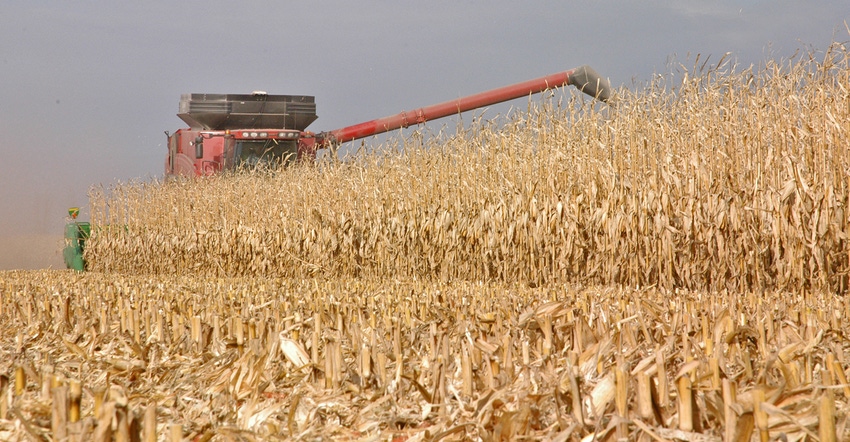
When should you start harvesting corn? Adam Spelhaug, a certified crop adviser and an agronomist at Peterson Farms Seed, Harwood, N.D., answers that and questions about minimizing harvest losses.
How wet should corn be at harvest?
We usually have two extremes that drive the question: too wet or too dry. The too wet situation is a harvest timing and storage issue; too dry is more of a harvesting issue. My ideal range is 17% to 23% moisture for harvesting corn. This range is something to shoot for but could be expanded with acreage constraints, timing or storage needs.
Why is 23% the high end of your range?
It is the point where grain can be safely stored in a natural air bin over winter without the chance of the kernels freezing together. Many new corn producers in the Red River Valley region rely on this type of drying. It is a nice way to harvest grain quickly and normally leads to good grain quality when dry.
Corn in the upper 20s has a chance for greater mechanical damage as well, leading to reduced storage time and chances for lower test weights.
Corn that is too dry at harvest can be an issue, as well, which is what we’ve encountered more often in recent years. If it’s too dry, you can lose too much corn. Gathering loss includes ears missed or lost by the machine, kernels shelled and lost by the stalk rolls or corn head, which is where most harvest loss occurs.
Threshing/separating losses are found behind the machine. Threshing losses are from kernels not properly shelled from the ear while separating losses occur from kernels that are not separated from the cobs, husks or leaves.
How should header loss be minimized?
Speed is key in reducing header loss with dry corn. Ground speed needs to be in a good ratio to roller speed. Plants should be pulled straight down through the header. If plants are leaning forward before being pulled down, the ground speed is too fast. Stalks that violently fly through the header indicate that ground speed is too slow in relation to roller speed.
Deck plate adjustment is also very important. Spacing that is too wide will lead to butt shelling of the ear. Spacing that is too narrow will lead to a higher-than-normal amount of leaves and stalks entering the combine, which makes it harder for the combine to separate the grain from the trash.
The plates should be set to 1/8-inch bigger than the average stalk size for the field. On-the-go adjustments have made this easier, but it’s important to check for wear and spacing before you begin. I suggest checking for harvest loss periodically throughout harvest, not just in the beginning. Just two kernels per 1 square foot is nearly equal to 1 bushel of lost corn per acre.
We want to harvest and sell every kernel we produce. Proper maintenance and adjustments during harvest are critical in achieving this.
About the Author(s)
You May Also Like






